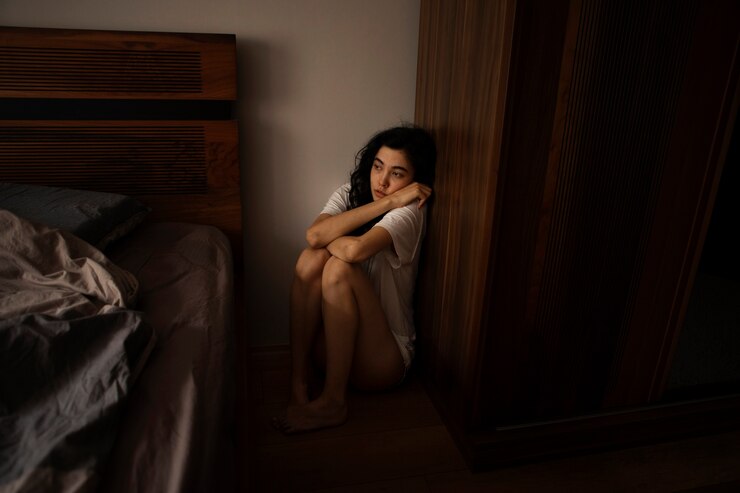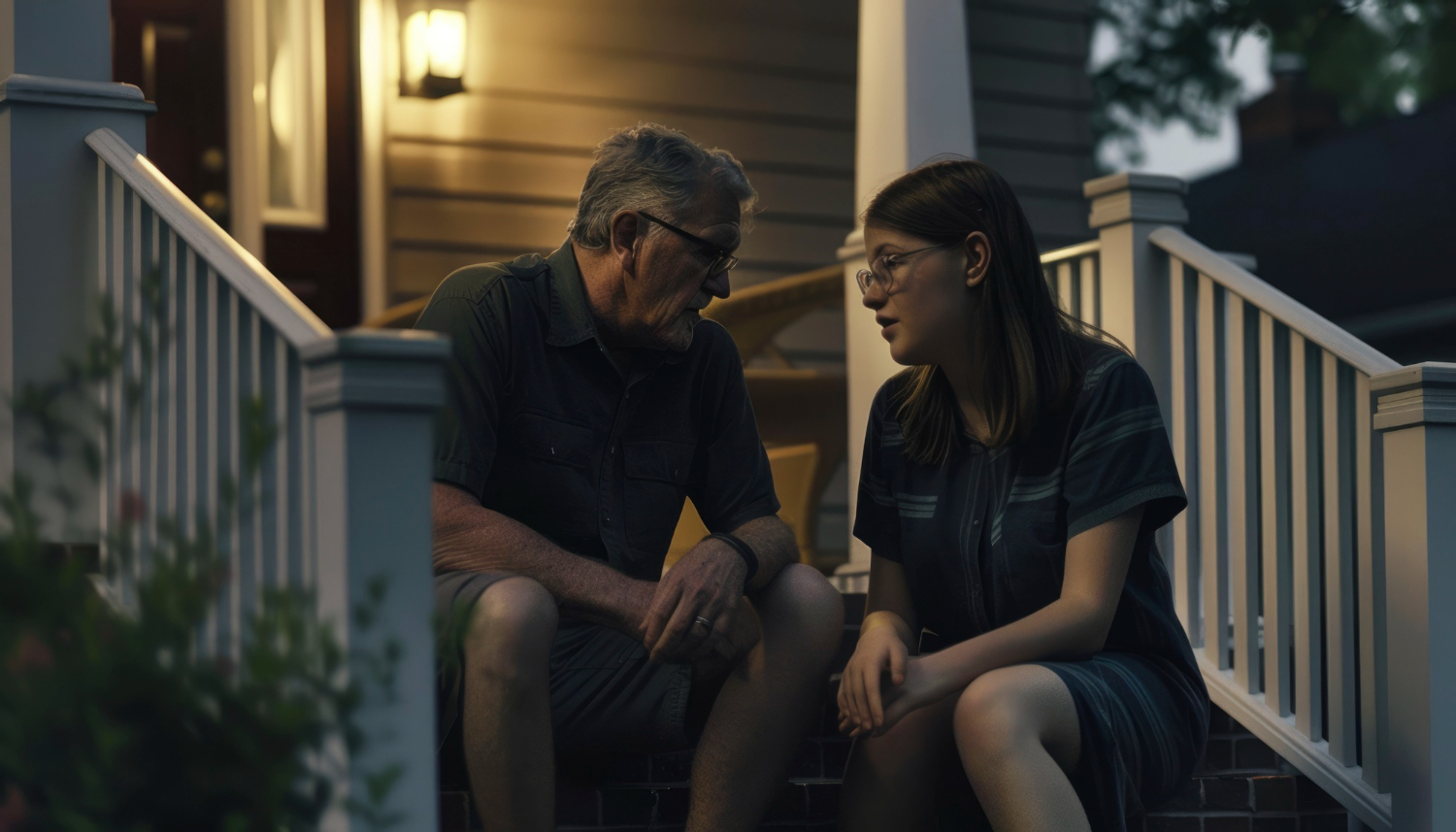
Post-traumatic stress disorder (PTSD) affects approximately 6% of the US population at some point in their lives, with an estimated 12 million adults experiencing it in any given year. Among the many debilitating symptoms of PTSD, sleep disturbances stand out as both particularly common and especially disruptive to overall quality of life. Between 70-90% of individuals with PTSD report some form of sleep problem, with nightmares and insomnia being the most frequently reported issues.Sleep is fundamental to our physical and mental well-being. For those with PTSD, the bedroom often becomes a battleground where the mind refuses to rest and traumatic memories resurface with vivid intensity. These sleep disruptions create a vicious cycle: poor sleep exacerbates PTSD symptoms, while heightened PTSD symptoms make quality sleep even more elusive.This comprehensive guide explores the intricate relationship between PTSD and sleep disturbances, examines the latest research, and offers evidence-based approaches for improving sleep quality for those affected by trauma.

The Biological Basis of PTSD's Impact on Sleep
The Hyperarousal Factor
At its core, PTSD involves a dysregulation of the body's stress response system. The condition creates a state of hyperarousal—a persistent "on alert" status where the brain and body remain vigilant for potential threats. This heightened state directly interferes with the brain's ability to transition into and maintain sleep.Research using neuroimaging techniques has revealed that individuals with PTSD show heightened activity in the amygdala (the brain's fear center) and reduced activity in the prefrontal cortex (responsible for rational thinking and emotional regulation). This neurobiological imbalance contributes to:
- Difficulty falling asleep due to racing thoughts and hypervigilance
- Frequent awakenings throughout the night
- Reduced time spent in restorative deep sleep
- Increased sensitivity to environmental stimuli during sleep
A 2020 study published in Sleep Medicine Reviews found that individuals with PTSD spent 50% less time in deep sleep compared to control groups, and experienced two to three times more nocturnal awakenings.
Disrupted REM Sleep
Rapid Eye Movement (REM) sleep—the stage where most dreaming occurs—is particularly affected by PTSD. Under normal circumstances, REM sleep plays a crucial role in emotional processing and memory consolidation. However, in PTSD:
- REM sleep is frequently interrupted
- Trauma-related nightmares occur predominantly during REM sleep
- The brain's natural ability to process emotional memories during sleep is compromised
According to research published in the Journal of Clinical Sleep Medicine, individuals with PTSD experience REM sleep that is characterized by increased autonomic activity (elevated heart rate, blood pressure, and respiration), which is the opposite of the relaxed physiological state that typically accompanies this sleep stage in healthy individuals.

Common Sleep Disturbances Associated with PTSD
Insomnia
Insomnia is the most prevalent sleep disturbance among those with PTSD, affecting up to 80% of individuals with the disorder. This typically manifests as:
- Difficulty falling asleep (sleep onset insomnia)
- Trouble staying asleep (sleep maintenance insomnia)
- Early morning awakening with inability to return to sleep
- Non-restorative sleep (waking up feeling unrefreshed)
The persistent fear of nightmares can create a condition known as "fear of sleep"—where individuals actively resist sleep to avoid distressing dreams. This behavioral pattern further reinforces insomnia and creates a self-perpetuating cycle of sleep deprivation.
Trauma-Related Nightmares
Unlike typical bad dreams, trauma-related nightmares in PTSD often involve:
- Realistic replaying of traumatic events
- Heightened emotional and physiological responses
- Frequent recurrence (sometimes nightly)
- Less symbolic content and more direct representation of trauma
A study in the Journal of Traumatic Stress found that 67% of combat veterans with PTSD reported combat-related nightmares at least once per week, with many experiencing them multiple times per week. These nightmares often result in abrupt awakenings accompanied by extreme anxiety, sweating, elevated heart rate, and sometimes vocalizations or physical movements.
Sleep-Disordered Breathing
Research has uncovered a surprising link between PTSD and sleep-disordered breathing conditions, particularly obstructive sleep apnea (OSA). Studies indicate that individuals with PTSD have a 40-60% higher prevalence of OSA compared to the general population. This connection may be explained by:
- Shared neurobiological pathways affecting both conditions
- The impact of chronic stress on upper airway muscle control
- Medication effects (some psychiatric medications can affect breathing during sleep)
- Lifestyle factors common in PTSD that increase OSA risk (weight gain, alcohol use)
When both conditions co-occur, sleep fragmentation is significantly increased, creating an even more severe impact on daytime functioning and quality of life.
Periodic Limb Movements and Parasomnias
Other sleep disorders that appear with increased frequency in those with PTSD include:
- Periodic limb movements during sleep (PLMS): Repetitive leg movements that disrupt sleep continuity
- REM sleep behavior disorder: Acting out dreams, sometimes violently, during REM sleep
- Sleepwalking and sleep talking: Occurring more frequently in those with combat-related PTSD
The Bidirectional Relationship: How Sleep Problems Worsen PTSD
The relationship between PTSD and sleep disturbances is not one-directional but rather forms a complex, mutually reinforcing cycle. Poor sleep doesn't just result from PTSD—it actively worsens its symptoms and can impede recovery.
Sleep Deprivation Effects on Emotional Regulation
Chronic sleep disruption impairs the brain's ability to regulate emotions through several mechanisms:
- Reduced prefrontal cortex activity, which normally helps control emotional responses
- Heightened amygdala reactivity to negative stimuli
- Decreased ability to engage in cognitive reappraisal (reframing negative thoughts)
A landmark study published in Current Biology demonstrated that sleep-deprived individuals showed a 60% increase in amygdala reactivity when exposed to emotionally negative images, compared to well-rested subjects.
Memory Consolidation Issues
Healthy sleep—particularly REM sleep—helps process emotional memories and reduce their emotional charge over time. When this process is disrupted in PTSD:
- Traumatic memories remain intensely emotional
- The brain's natural ability to integrate traumatic experiences is compromised
- Fear extinction learning (the process of unlearning fear responses) is impaired
Research published in Science found that adequate REM sleep following exposure therapy sessions significantly improved treatment outcomes for individuals with anxiety disorders, suggesting similar mechanisms might apply to PTSD treatment.
Daytime Functioning Impact
Sleep disruption from PTSD creates daytime consequences that can exacerbate the condition:
- Increased irritability and anger
- Reduced cognitive function and concentration
- Heightened startle response and hypervigilance
- Greater susceptibility to stress
- Increased avoidance behaviors
A 2019 study in the Journal of Psychiatric Research found that PTSD patients who reported poor sleep showed significantly worse response to cognitive behavioral therapy compared to those with better sleep quality.
Assessing Sleep Problems in PTSD
Proper assessment of sleep disturbances is crucial for effective treatment. Clinicians typically use:
Self-Report Measures
- Pittsburgh Sleep Quality Index (PSQI)
- Insomnia Severity Index (ISI)
- PTSD Sleep Inventory
- Dream Content Analysis
Objective Measures
- Polysomnography (PSG): The gold standard for sleep assessment, measuring brain waves, eye movements, muscle activity, heart rhythm, and breathing
- Actigraphy: Wrist-worn devices that track movement patterns to estimate sleep-wake cycles
- Home sleep testing: Particularly useful for assessing sleep-disordered breathing
A comprehensive assessment often reveals multiple co-occurring sleep issues that require integrated treatment approaches.
Evidence-Based Treatments for Sleep Disturbances in PTSD
Cognitive Behavioral Therapy for Insomnia (CBT-I)
CBT-I has consistently demonstrated effectiveness for insomnia related to PTSD, with success rates of 70-80% for significant improvement. This approach includes:
- Sleep restriction therapy: Limiting time in bed to match actual sleep ability
- Stimulus control: Re-establishing the bedroom as a place for sleep rather than wakefulness
- Sleep hygiene education: Promoting habits that facilitate sleep
- Cognitive restructuring: Addressing unhelpful beliefs about sleep
- Relaxation training: Teaching skills to reduce physiological arousal
A meta-analysis published in the Journal of Clinical Psychology found that CBT-I produces larger and more durable improvements in sleep quality compared to sleep medications for individuals with PTSD-related insomnia.
Imagery Rehearsal Therapy (IRT)
IRT specifically targets recurrent nightmares by having patients:
- Write down the content of recurring nightmares
- Change the storyline to create a less threatening version
- Mentally rehearse the new dream scenario while awake
This approach has shown impressive results, with studies reporting 50-70% reduction in nightmare frequency and intensity after just 4-6 sessions. The Department of Veterans Affairs now recommends IRT as a first-line treatment for trauma-related nightmares.
Pharmacological Approaches
While psychological treatments are preferred for long-term management, medications can play an important role:
- Prazosin: Originally developed for hypertension, prazosin has shown particular promise for reducing PTSD-related nightmares. A study involving combat veterans found that 75% reported significant reduction in nightmares with prazosin treatment.
- Trazodone: Commonly used for PTSD-related sleep disturbances, this medication can improve sleep continuity without the dependence risks of benzodiazepines.
- SSRI antidepressants: While primarily targeting overall PTSD symptoms, SSRIs like sertraline and paroxetine may indirectly improve sleep quality as PTSD symptoms decrease.
- Caution with benzodiazepines: Despite their sedating properties, benzodiazepines are generally not recommended for PTSD due to potential for dependence, interference with trauma processing, and possible worsening of sleep-disordered breathing.
PTSD-Focused Therapies with Sleep Components
The most effective approach often combines sleep-specific interventions with evidence-based PTSD treatments:
- Cognitive Processing Therapy (CPT): Addresses distorted beliefs related to trauma that may contribute to hyperarousal and sleep problems.
- Prolonged Exposure (PE): Can reduce overall anxiety and hypervigilance that interfere with sleep.
- Eye Movement Desensitization and Reprocessing (EMDR): Helps process traumatic memories that may manifest as nightmares.
A 2021 study in the Journal of Traumatic Stress found that when specific sleep interventions were added to standard PTSD therapy, treatment outcomes improved by approximately 30% compared to PTSD therapy alone.
Lifestyle and Complementary Approaches
Beyond formal treatments, several lifestyle modifications and complementary approaches can support better sleep:
Physical Activity
Regular exercise has consistently shown benefits for both PTSD symptoms and sleep quality:
- Moderate aerobic exercise (30 minutes, 3-5 times weekly) reduces time to fall asleep by an average of 15 minutes
- Strength training twice weekly improves sleep efficiency and reduces nighttime awakenings
- Exercise timing matters—morning or afternoon exercise generally provides more sleep benefits than evening workouts
A large-scale study published in Sleep Medicine found that PTSD patients who engaged in regular physical activity reported 40% fewer sleep disturbances compared to sedentary individuals with PTSD.
Sleep Environment Optimization
Creating a sleep sanctuary particularly addresses the hypervigilance component of PTSD:
- Cool, dark, quiet room (consider blackout curtains and white noise machines)
- Security measures that provide peace of mind (properly locked doors, security systems)
- Removal of electronics and work materials from the bedroom
- Comfortable, supportive mattress and pillows
Mindfulness and Relaxation Practices
Evidence supports the use of mind-body approaches for improving sleep in PTSD:
- Mindfulness-Based Stress Reduction (MBSR) programs have shown 35-50% improvements in sleep quality measures for individuals with PTSD
- Progressive muscle relaxation before bed can reduce physical tension
- Guided imagery focused on safe, peaceful scenes can counter hyperarousal
- Breath-focused meditation helps activate the parasympathetic nervous system
Nutrition and Substance Considerations
Diet and substance use significantly impact sleep quality:
- Limiting caffeine after noon (caffeine has a half-life of 5-7 hours)
- Avoiding alcohol near bedtime (while it may help with falling asleep, it severely disrupts sleep quality)
- Timing meals to avoid heavy eating within 3 hours of bedtime
- Considering tryptophan-rich foods that support natural melatonin production (turkey, nuts, eggs, salmon)
Special Populations and Considerations
Veterans and Active Military
Military personnel face unique challenges regarding PTSD and sleep:
- Operational environments often create lasting sleep-disrupting habits
- Combat exposure increases nightmare frequency and intensity
- Military culture may discourage seeking help for sleep problems
- Higher rates of comorbid traumatic brain injury (TBI) further complicate sleep issues
The VA's National Center for PTSD has developed specific protocols combining CBT-I, Imagery Rehearsal Therapy, and prazosin medication that have shown 60-70% response rates in this population.
First Responders
First responders (police, firefighters, paramedics) experience:
- Shift work that inherently disrupts circadian rhythms
- Repeated exposure to traumatic events
- High rates of sleep apnea (30-40% in some studies)
Specialized programs addressing both operational stressors and traumatic exposures show better outcomes than standard approaches.
Survivors of Sexual Trauma
For survivors of sexual trauma, sleep disturbances often present with:
- Heightened fear response specifically around bedtime
- Increased sleep onset difficulties
- Hypervigilance focused on environmental sounds
- Nightmares with themes of vulnerability
Gender-sensitive approaches that emphasize safety, control, and trauma-informed care show the best outcomes for this population.
The Future of Sleep Treatment in PTSD
Emerging approaches show promise for addressing the sleep-PTSD connection:
Technology-Based Interventions
- Digital CBT-I programs have shown comparable results to in-person treatment
- Smart mattresses and bedroom sensors that adjust temperature, lighting, and sound based on sleep stage
- Wearable devices that detect nightmares and provide gentle vibration to change sleep stages without awakening
- Virtual reality exposure therapy specifically targeting trauma triggers associated with sleep
Chronotherapy Approaches
Circadian rhythm-focused interventions including:
- Light therapy to strengthen circadian timing
- Strategic melatonin supplementation
- Sleep phase adjustment protocols
- Dark therapy (controlled light exposure in evenings)
Neuromodulation
Brain stimulation techniques showing preliminary evidence for PTSD-related sleep disturbances:
- Transcranial magnetic stimulation (TMS) targeting brain regions involved in both PTSD and sleep regulation
- Cranial electrotherapy stimulation (CES) for reducing insomnia symptoms
- Vagal nerve stimulation to reduce autonomic hyperarousal
Conclusion
Sleep disturbances and PTSD exist in a complex, mutually reinforcing relationship. Far from being simply a symptom of PTSD, sleep problems actively contribute to the maintenance and severity of the condition. Addressing sleep issues isn't merely about improving quality of life—it's an essential component of effective PTSD treatment.The research clearly indicates that targeted sleep interventions can create a positive cycle: as sleep improves, PTSD symptoms often decrease, which further enhances sleep quality. This bidirectional improvement offers hope for breaking the devastating cycle that keeps many trauma survivors trapped in suffering.With a combination of evidence-based psychological treatments, judicious use of appropriate medications, lifestyle modifications, and emerging technologies, there are more effective options than ever for addressing the sleep-PTSD connection. The key is recognizing the central importance of sleep and making it a primary focus of treatment rather than a secondary concern.
References
- https://www.ptsd.va.gov/professional/treat/cooccurring/sleep_problems.asp
- https://www.sleepfoundation.org/mental-health/ptsd-and-sleep
- https://www.ncbi.nlm.nih.gov/pmc/articles/PMC6689741/
- https://www.sciencedirect.com/science/article/abs/pii/S1087079218301527
- https://www.frontiersin.org/articles/10.3389/fpsyt.2018.00167/full






























